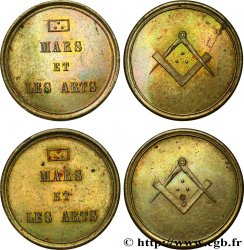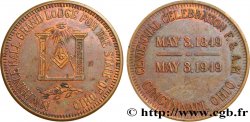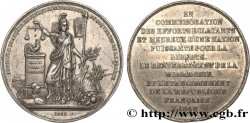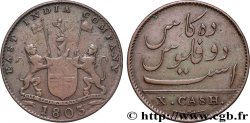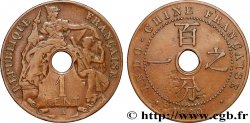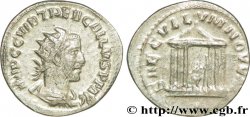E-auction 86-44191 - fjt_339276 - FREEMASONRY MAISON PHILANTROPIQUE DE PARIS 1781
Чтобы принять участие в торгах, вы должны войти в систему и стать подтвержденным участником аукциона. Войдите, чтобы сделать ставку. Ваш аккаунт будет подтвержден в течение 48 часов. Не ждите до закрытия торгов, чтобы зарегистрироваться.Сделав ставку на данный товар, вы вступаете в юридическое соглашение на покупку выбранного товара и нажатием кнопки «Сделать ставку» подтверждаете принятие вами условий интернет-аукционов cgb.fr.
Ставка может бить сделана только в полном эквиваленте евро. Торги закроются согласно времени, указанному в описании товара, все ставки, сделанные после закрытия торгов, учитываться не будут. Не следует откладывать предложение вашей ставки до последнего момента, так как система может не успеть обработать вашу заявку, и ваша ставка не будет принята. Более детальную информацию вы найдёте здесь: FAQ по интернет-аукционам.
БЕСПЛАТНО.
БЕСПЛАТНО.
| Оценить : | 48 € |
| Цена : | 24 € |
| Максимальная предлагаемая цена : | 29 € |
| Конец торгов : | 08 December 2014 19:07:30 |
| Участников : | 7 Участников |
Тип MAISON PHILANTROPIQUE DE PARIS
Дата: 1781
Металл: silver
Диаметр: 30 mm
Ориентация осей монеты: 6 h.
Век: cannelée
Ссылки в каталоге: :
Лицевая сторона
Аверс: легенда: DONEC A COELO DESCENDAT ; À L'EXERGUE : 1781.
Аверс: описание: Une main tenant un arrosoir sous le zodiaque; dans le paysage, un chateau fort, deux calvaires et un clocher au milieu des champs.
Аверс: перевод: Jusqu'à ce qu'elle descende du Ciel.
Обратная сторона
Реверс: легенда: MAISON PHILANTROPIQUE DE PARIS.
Реверс: Описание: en cinq lignes dans une couronne de feuillage.
Комментарий
Sans être directement affiliée, cette société de bienfaisance partageait l’esprit de la maçonnerie et était le bras caritatif du Grand Orient de France. On trouve un document les concernant en ligne sur gallica avec le Plan d'établissemens à former sous la direction de la maison philantropique de Paris, pour élever les enfans trouvés, sans leur donner de nourrices... : discours lu au comité de la maison, le 1er décembre 1789 par M. le chevalier de Gestas.
La franc-maçonnerie s’implante en France aux alentours du premier quart du XVIIIe s. sous l’influence d’aristocrates anglais. Initiatique, elle est fondée sur le rite hiramique, du nom d’Hiram de Tyr, personnage biblique, architecte du roi Salomon sur le chantier du Temple et qui a résisté à la torture sans livrer ses secrets. Hiram a aussi donné un point de départ du calendrier maçonnique commençant 4000 ans avant le calendrier chrétien. Les symboles servent de signes de reconnaissance entre les initiés, notamment des outils de constructeur de cathédrales (équerre, compas, niveau, maillet, etc.), des formes (triangle, étoile), des nombres (trois, cinq, sept) et des lettres.
Without being directly affiliated, this charitable society shared the spirit of Freemasonry and was the charitable arm of the Grand Orient of France. A document about them can be found online on Gallica with the Plan of establishments to be formed under the direction of the philanthropic house of Paris, to raise foundlings, without giving them wet nurses...: speech read to the committee of the house, on December 1, 1789 by Mr. the Chevalier de Gestas. Freemasonry took root in France around the first quarter of the 18th century under the influence of English aristocrats. Initiatory, it is based on the Hiramic rite, named after Hiram of Tyre, a biblical figure, architect of King Solomon on the construction site of the Temple and who resisted torture without revealing his secrets. Hiram also gave a starting point for the Masonic calendar beginning 4000 years before the Christian calendar. Symbols serve as signs of recognition between initiates, including cathedral builder's tools (square, compass, level, mallet, etc.), shapes (triangle, star), numbers (three, five, seven) and letters
La franc-maçonnerie s’implante en France aux alentours du premier quart du XVIIIe s. sous l’influence d’aristocrates anglais. Initiatique, elle est fondée sur le rite hiramique, du nom d’Hiram de Tyr, personnage biblique, architecte du roi Salomon sur le chantier du Temple et qui a résisté à la torture sans livrer ses secrets. Hiram a aussi donné un point de départ du calendrier maçonnique commençant 4000 ans avant le calendrier chrétien. Les symboles servent de signes de reconnaissance entre les initiés, notamment des outils de constructeur de cathédrales (équerre, compas, niveau, maillet, etc.), des formes (triangle, étoile), des nombres (trois, cinq, sept) et des lettres.
Without being directly affiliated, this charitable society shared the spirit of Freemasonry and was the charitable arm of the Grand Orient of France. A document about them can be found online on Gallica with the Plan of establishments to be formed under the direction of the philanthropic house of Paris, to raise foundlings, without giving them wet nurses...: speech read to the committee of the house, on December 1, 1789 by Mr. the Chevalier de Gestas. Freemasonry took root in France around the first quarter of the 18th century under the influence of English aristocrats. Initiatory, it is based on the Hiramic rite, named after Hiram of Tyre, a biblical figure, architect of King Solomon on the construction site of the Temple and who resisted torture without revealing his secrets. Hiram also gave a starting point for the Masonic calendar beginning 4000 years before the Christian calendar. Symbols serve as signs of recognition between initiates, including cathedral builder's tools (square, compass, level, mallet, etc.), shapes (triangle, star), numbers (three, five, seven) and letters








 Cообщить об ошибке
Cообщить об ошибке Распечатать страницу
Распечатать страницу Отправить мой выбор
Отправить мой выбор Задать вопрос
Задать вопрос Consign / sell
Consign / sell
 Информация
Информация

